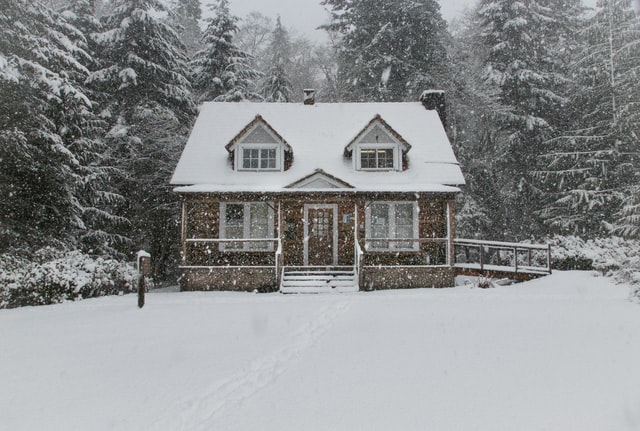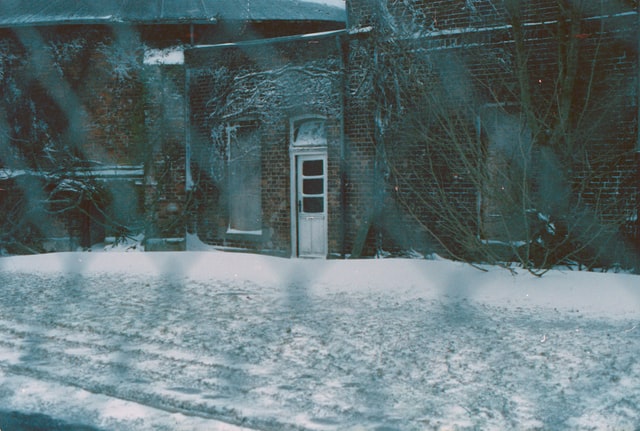Unfortunately, in our area, most of the year falls on cold weather, so protection from frost is one of the most important tasks if you want to spend the winter in comfortable conditions. You are probably familiar with the phenomenon when the batteries are hot, but the house is still cold. There is no need to look for the reason for a long time: one of the main reasons for heat loss is the low thermal resistance of the outer walls, through which valuable heat escapes.
At the same time, it is important not to forget that it is possible to reliably protect a dwelling from the cold only with an integrated approach when both walls and windows create a good thermal insulation barrier. If you are in doubt about the reliability of your thermal insulation, you can identify sources of heat loss using thermal imaging. It will help identify heat leaks and decide on measures to eliminate them. Often small investments in additional thermal insulation can significantly reduce heating costs and pay off within 2-3 years.
Let’s take a closer look at the main sources of heat loss and how to get the most out of your home from the cold with the homily experts.

Contents
Penoplex
Penoplex is ideal for external wall insulation since this insulation is not afraid of moisture and practically does not absorb it. If you use penoplex, then rodents will never start in the wall, the material is also dense and durable, more resistant to mechanical damage than polystyrene plates. When insulating with foam, the plates are attached to the wall with glue, and additionally fastened with fungi, 5 pieces per sheet – 4 in the corners and one in the middle. Then the insulation is usually sheathed with siding.
Insulation of the façade
It is impossible to save a house from the cold by simply increasing the thickness of the walls. To ensure the required level of heat retention, the thickness of reinforced concrete walls should be at least 6 m, and of brick – at least 2.3 m. Therefore, thermal insulation materials are used.
One of the most common finishing methods is to insulate the facades of houses from the outside with various insulation materials. Thus, you will kill two birds with one stone: protect the walls from negative weather influences, get walls that can retain heat, and at the same time decorate the façade.
However, first, you need to choose the right material with which you can effectively insulate the house. When choosing insulation for the façade from the outside, pay attention to resistance to mechanical damage and resistance to rodents, which can turn the insulation into a sieve in a matter of months. Get down to business rationally: for example, there is no point in using materials of the same thickness to insulate all sides of the house. For the southern wall, medium-thick insulation will suffice, since it receives the greatest amount of solar heat.
Mineral wool
Mineral wool is a slab of basalt fiber made of inorganic material, which is made from molten rocks, slags, and mixtures of sedimentary rocks. Basalts are igneous rocks formed on the earth’s surface as a result of the solidification of lava that poured out during volcanic eruptions. They occupy vast areas of the ocean floor, but on land, in places, they form areas of many hundreds of thousands of square kilometers. Basalts are well known as valuable building and facing material. But as such, they are viewed more as a solid foundation or design element.
Meanwhile, there is a technology by which the so-called basalt wool can be made from this rock – thin and flexible fibers obtained as a result of cooling the mineral melt previously crushed and drawn into threads. Insulation of the façade of the house with mineral wool, as well as insulation of the attic can be made from materials made on a basalt basis. Minvata should be attached to the façade using a suspended ventilated facade system. In terms of characteristics, basalt slabs are fireproof and can withstand temperatures over 1000 ° C. The material has excellent thermal insulation, high chemical resistance, but is afraid of moisture.
Thermal insulation materials
There are a large number of insulating materials, the selection of which should take into account the climatic characteristics of your region. Let’s focus on the most common ones.
Styrofoam plates
This is the most common material for insulating facade walls due to its affordable price. It has been known since the 30s of the last century, and since then has not lost its positions in construction. Due to the fact that the foam is 98% air, it is very lightweight and does not allow cold to pass through. The expanded polystyrene facade reduces heat loss by 67-70%. Modern polystyrene is not flammable, but rodents like to settle in the material, and if they are found in abundance in the area, then it is better to refuse to insulate the walls of the facade with expanded polystyrene and it is better to pay attention to alternative materials, such as penoplex and mineral wool.
Wooden houses
If you are just thinking about building a house, pay attention to wooden houses. Even according to popular belief, warm brick is noticeably inferior to wood. The thermal resistance of a 15 cm thick pine and the spruce wall is 1.4 times higher than that of brickwork more than half a meter thick.
Modern wooden houses are booming. This is not only an opportunity to live in comfortable conditions and in a house that is right for you but also a chance to avoid the influence of harmful building materials that are crammed into mass development. Due to their natural properties, wooden houses are the most environmentally friendly and energy-efficient. True, this is in the event that all components are made exclusively from natural materials.
Recently, a huge number of companies have appeared on the market, offering not only modern but also cheap wooden houses. However, in pursuit of cheapness, we often forget about some important points that should be considered when building a wooden house. Construction should be carried out by professionals who will calculate the binding and correctly lay on the foundation. The details of the house must adhere flawlessly to each other, the insulation materials are carefully laid, and the engineering networks are carried out according to high-quality standards. A high-quality wooden house “breathes”, it is rarely stuffy or damp.
Thermal insulation inside the house
Insulation of the house from the side of the facade does not always create the proper effect for preserving heat in the living room, so the owners themselves have to worry about the thermal insulation of the rooms, without waiting for the next major overhaul of the building. And you can do it yourself. In addition, you can decide for yourself how reliable the thermal insulation is, without relying on standard standards and directives. As a rule, only the wall (walls) that faces the side of the facade is insulated; it makes no sense to carry out thermal insulation of the interior partition. Furniture is removed from the outer wall, furniture items are covered with a protective film and the coating can be removed from the wall surface.
Thermal insulation of walls from the inside
If the house is cold in spite of a working heating system, then the walls can be insulated from the inside. To do this, you need to calculate and buy the required amount of insulation (polystyrene, mineral wool, ROCKWOOL, etc.) and prepare an adhesive composition to fix it. Please note that the glue must be designed specifically for fixing thermal insulation materials!
After purchasing everything you need, you need to remove the old covering from the walls – wallpaper or peeling paint, and then cover the surface with a primer to reduce absorption. Knead the glue to a medium consistency, apply it with a notched trowel to the surface of the insulation boards, and press the insulation against the wall, starting from the bottom of the corner. Boards are glued end-to-end from bottom to top. After completing the installation of the insulation on top of the thermal insulation, a reinforcing mesh is also attached to the glue, and then a standard painting is performed on the surface.
We insulate the windows
Special attention should be paid to door and window openings since practice shows that it is precisely the insufficient thermal insulation in these places that leads to a general deterioration in the thermal insulation properties of houses. It is not enough to insulate the walls from the inside to create comfortable conditions in the house. As for the window blocks directly, it is not only the type of construction that is important, but also how competently the installation of windows is performed and whether additional insulation of the slopes is made.
Replacing old windows with new metal-plastic or plastic structures will help to keep the house warm. Such windows consist of a multi-chamber profile system and a glass unit, which can also have from one to four chambers. Note that the price of a plastic window with good thermal insulation parameters does not differ so much from the cost of a standard plastic window in order to save on this at the expense of your own comfort.
For reliable protection of the house from the cold, choose at least a four-chamber profile and a two-chamber double-glazed unit with energy-saving glass. It will not be superfluous to order a double-glazed unit with an inert gas between the glasses (krypton or argon), because such a glazing system will reduce the loss of thermal energy by 5-10%. As for the window slopes, the best thermal insulation parameters for structures made of plasterboard and plaster, under which you can additionally fix a strip of insulation.
Underfloor heating
Do you want to walk barefoot on the warm floor after taking a relaxing bath? This idea becomes even more attractive with the onset of cold weather. Under-floor heating will provide you with the most comfortable conditions thanks to the ideal temperature under your feet, which is ideal 27-35 ° C.
In addition to creating incredibly comfortable conditions in the cold season, under-floor heating allows heat to spread vertically from bottom to top, warming the air to a height of 2, 5 meters. Moreover, at floor level, the air temperature is several degrees higher than above the ceiling. This is the most suitable scheme for a person because the lower limbs need more heat than the upper body. As a result, you can safely reduce the temperature in the room by a couple of degrees without compromising our health and comfort, and thus save on thermal energy.
Under-floor heating is suitable for both primary and secondary heating. In the latter case, a heating system of lower power is installed only in separate rooms, most often in the bathroom and in the kitchen. Recently, under-floor heating has left the luxury category for the elite and is quite affordable at affordable prices.
Pond care in winter
If you have made your dream come true and built a small pond on your site, then get ready for the fact that caring for your small garden will take even longer. If you competently carry out the planning and arrangement of rockeries, then the efforts to care for them can be minimized. Small but systematic care measures can help you avoid big and time-consuming complications. Remove debris, fallen tree leaves, dead, old, or overgrown aquatic plants in time, otherwise organic material will start to rot and it will turn into mud, which is much more difficult to combat.
If you decide to launch fish into your pond, do not forget that their number should not exceed two individuals with a length of 10 cm per 100 liters of water. Now you should take care of saturating the water with oxygen, as well as wintering heat-loving fish indoors, and also if the depth of the pond is less than 1.5 m because in this case, it will freeze completely. In addition, you will have needed filter pumps to keep the water clean and circulated at all times.







